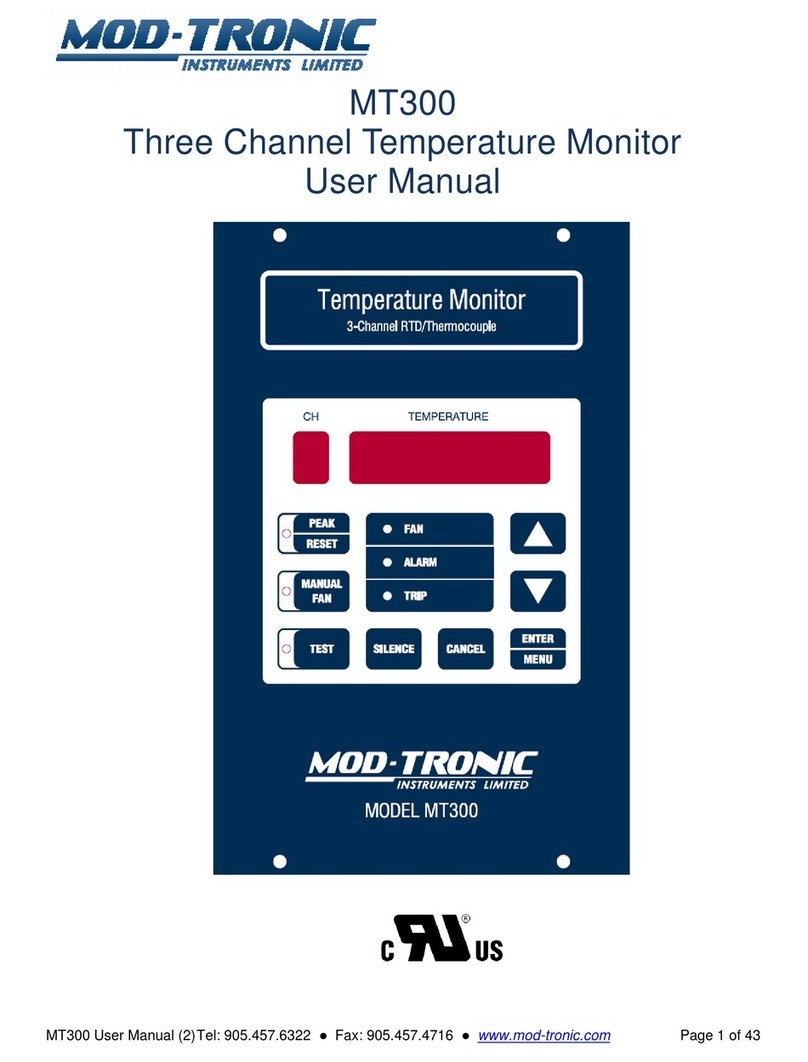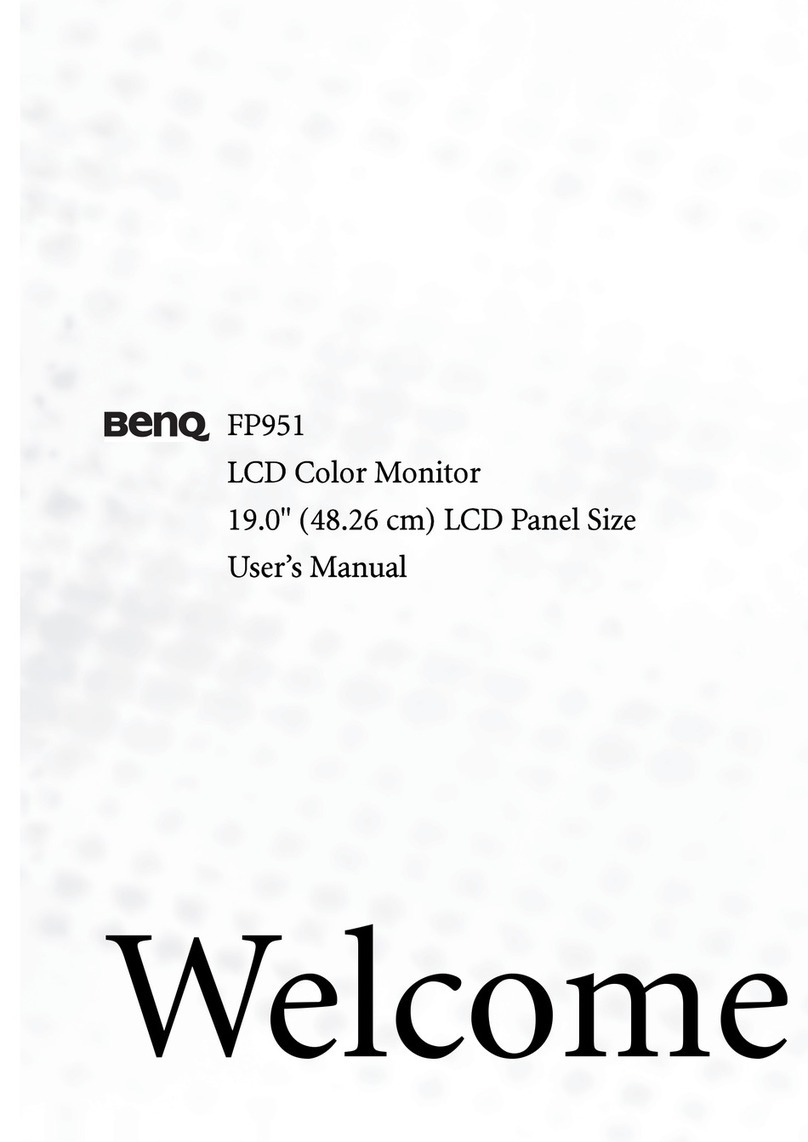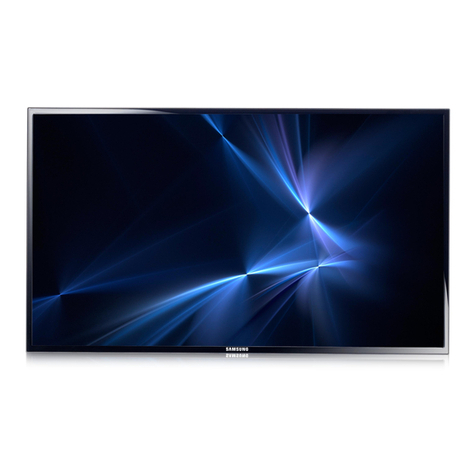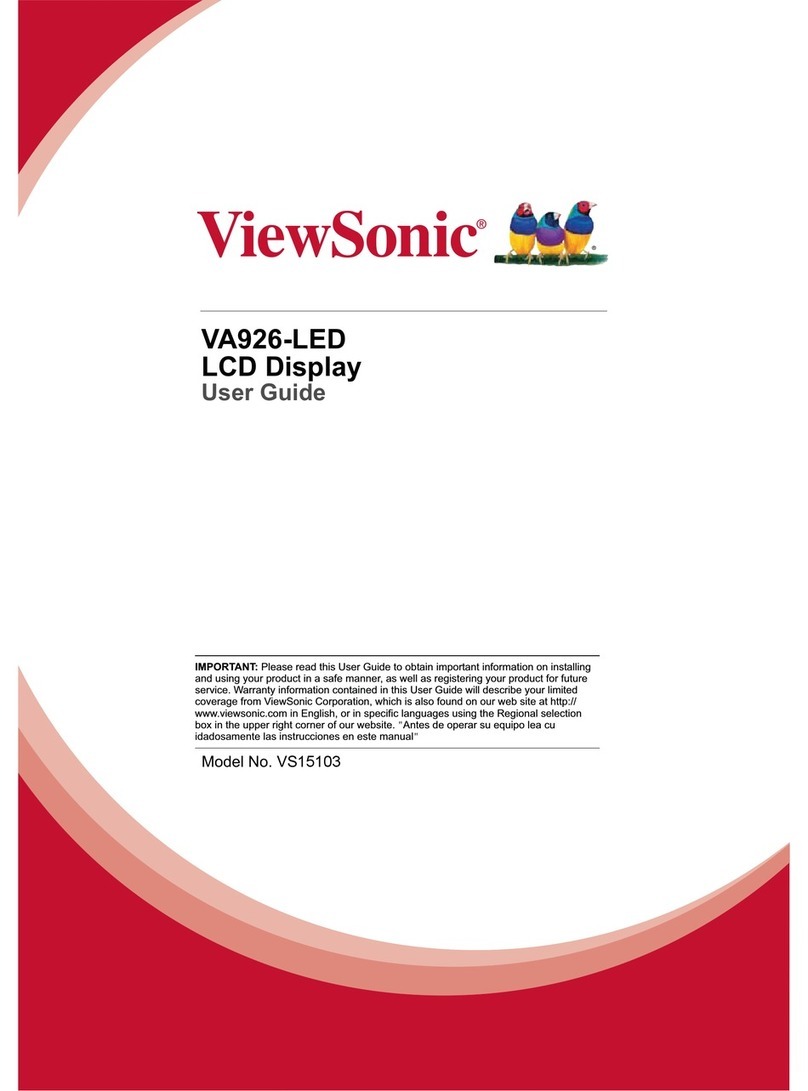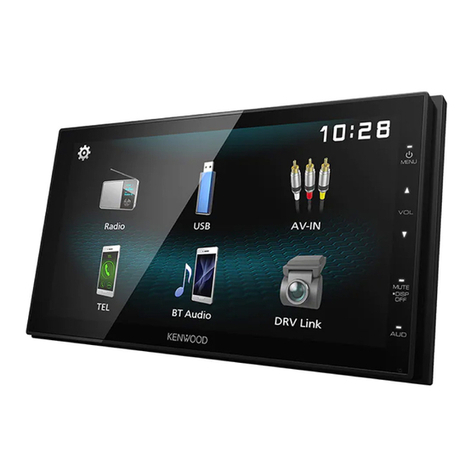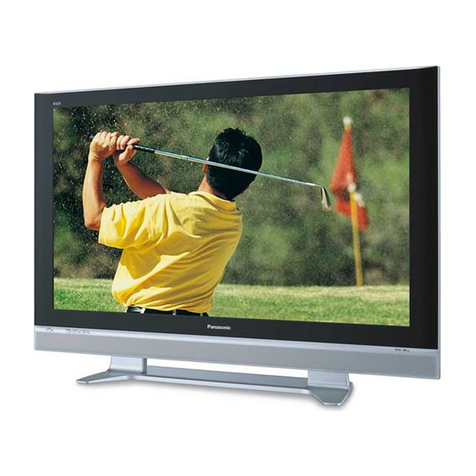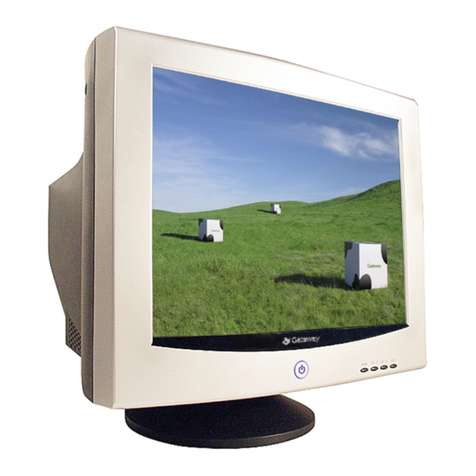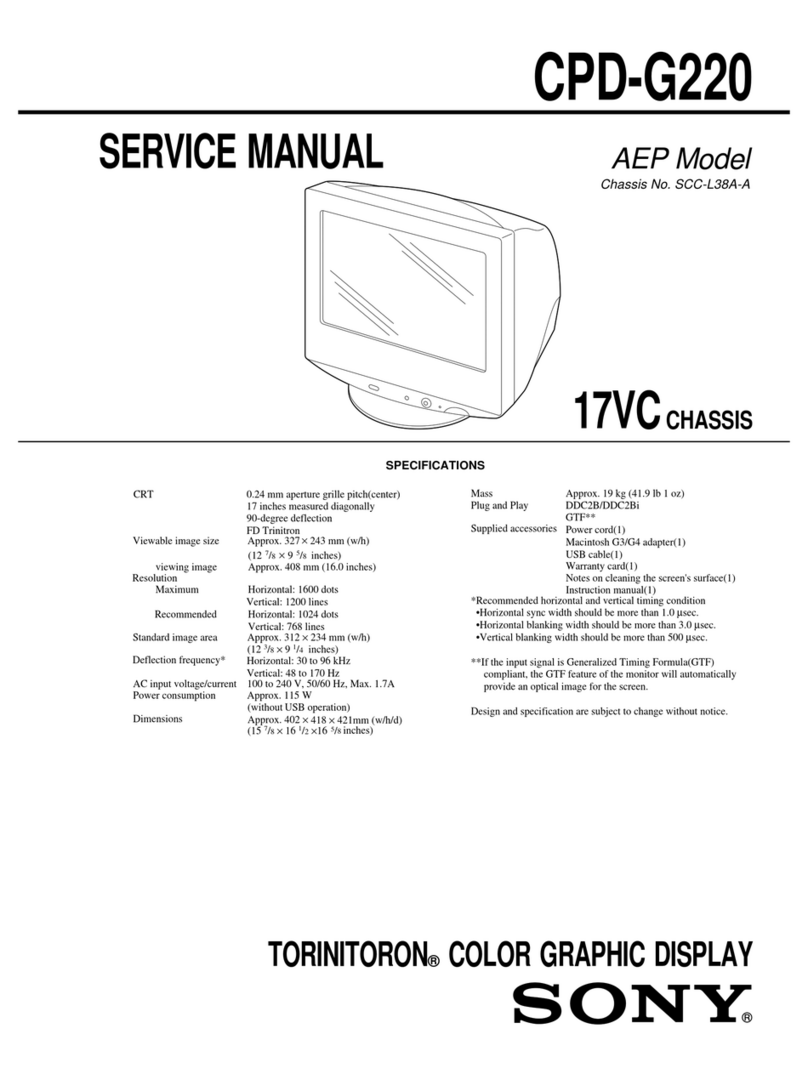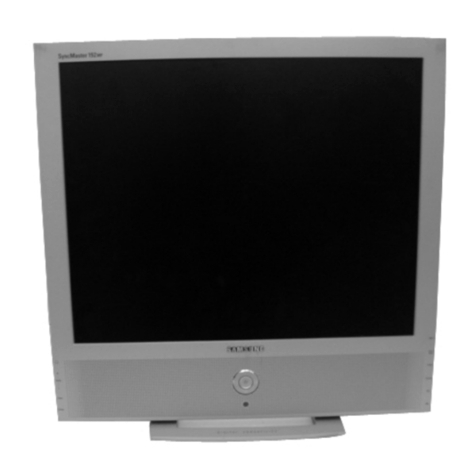Biolight V6 User manual

V6 Vital Signs Monitor
User’s Manual

Vital Signs Monitor User’s Manual
I
Product Information
Product Model: V6
Product Name: Vital Signs Monitor
Manufacturer for BIOLIGHT MEDITECH USA
After Service Contact Information:
Address: 533 Broadhollow Road Ste B-24, Melville, New York 11747
Fax: 888-785-8948
Toll-free consultation hot line: 888-82-BLTUSA (888-822-5887)
Revision History
This manual has a revision number. This revision number changes whenever the
manual is updated due to software or technical specification change. Contents of this
manual are subject to change without prior notice.
Document No.: J/V6CE-A-010
Revision number: V3.1
Release time: 2013
Copyright © 2013 Guangdong Biolight Meditech Co., Ltd. All rights reserved.
CE mark
EC Representative Name:
Shanghai International Trading Corp. GmbH (Hamburg)
EC Representative Address:
Eiffestrasse 80, 20537 Hamburg Germany
Statement

Vital Signs Monitor User’s Manual
II
Manufacturer holds the copyright of this manual, and we are also entitled to deal
with this manual as confidential files. This manual is only used for operation,
maintenance and service of product, someone else can not publish the manual.
This manual contains exclusive information protected by copyright laws and we
reserve its copyright. Without written approval of manufacturer no parts of this
manual shall be photocopied, Xeroxed or translated into other languages.
The contents contained in this manual are subject to amendments without
notification.
Manufacturer's Responsibility
Only under the following circumstances will manufacturer be responsible for the
safety, reliability and performance of the instrument:
All the installation, expansion, readjustment, renovation or repairs are conducted
by the personnel certified by manufacturer.
The storage condition, operation condition and electrical status of the instrument
conform to the product specification.
The instrument is used in accordance with the user’s manual.
About this manual
This manual contains the instructions necessary to operate the product safely and
in accordance with its function and intended use. Observance of this manual is a
prerequisite for proper product performance and correct operation and ensures patient
and operator safety.
This manual is based on the maximum configuration and therefore some contents
may not apply to your product. If you have any question, please contact us.
This manual is an integral part of the product. It should always be kept close to the
equipment so that it can be obtained conveniently when needed.
The manual is geared for clinical professionals who are expected to have a working
knowledge of medical procedures, practiced and terminology as required for
monitoring patients.
All illustrations in this manual serve as examples only. They may not necessarily
reflect the setup or data displayed on your product.
Conventions:

Vital Signs Monitor User’s Manual
III
Bold Italic text is used in this manual to quote the referenced chapter or
sections.
【】is used to enclose screen texts.
→ is used to indicate operational procedures.

Vital Signs Monitor User’s Manual
IV
Contents
Chapter 1 General Introduction..................................................................................... 1
1.1 Intended Use.............................................................................................................1
1.2 Main Unit..................................................................................................................1
1.3 Work mode............................................................................................................... 5
Chapter 2 Safety.................................................................................................................1
2.1 Safety Information................................................................................................... 1
2.2 Safe Operation Conditions...................................................................................... 4
2.3 Equipment Symbols.................................................................................................4
Chapter 3 Operations........................................................................................................1
3.1 Unpacking and Checking........................................................................................ 1
3.2 Getting Started..........................................................................................................2
3.3 Shutting off the Monitor..........................................................................................3
3.4 Operation Modes......................................................................................................3
3.5 Using Menu.............................................................................................................. 3
3.6 General Setup........................................................................................................... 4
3.7 Default Setups.......................................................................................................... 5
3.8 Nurse Call................................................................................................................. 5
3.9 ID Name....................................................................................................................7
3.10 Patient ID................................................................................................................7
3.11 Viewing the Machine Info.....................................................................................7
Chapter 4 User Interface.................................................................................................. 1
4.1 Display Style............................................................................................................ 1
4.2 Screen Layout...........................................................................................................2
4.3 Patient Information.................................................................................................. 7
4.4 Demo.........................................................................................................................8
4.5 Machine Maintenance..............................................................................................9
Chapter 5 Alarm................................................................................................................ 1
5.1 Alarm Category........................................................................................................1
5.2 Alarm Level..............................................................................................................2

Vital Signs Monitor User’s Manual
V
5.3 Alarm Indicators.......................................................................................................2
5.4 Setting Alarm Volume.............................................................................................4
5.5 Parameter Alarm...................................................................................................... 5
5.6 Pausing Alarms........................................................................................................ 5
5.7 Silence.......................................................................................................................6
Chapter 6 SpO2...................................................................................................................1
6.1 Introduction.............................................................................................................. 1
6.2 Safety Information................................................................................................... 1
6.3 Monitoring Procedure..............................................................................................2
6.4 SpO2Display............................................................................................................ 2
6.5 Setting SpO2............................................................................................................. 4
6.6 Masimo Information................................................................................................ 7
6.7 Nellcor Information................................................................................................. 7
Chapter 7 NIBP..................................................................................................................1
7.1 Introduction.............................................................................................................. 1
7.2 Safety Information................................................................................................... 1
7.3 Measurement Limitations........................................................................................2
7.4 Measurement Mode................................................................................................. 2
7.5 Monitoring Procedure..............................................................................................2
7.6 NIBP Display........................................................................................................... 4
7.7 Setting NIBP.............................................................................................................5
7.8 Setting Venipuncture Press..................................................................................... 5
7.9 NIBP Resetting.........................................................................................................5
7.10 Air Leakage Testing...............................................................................................6
Chapter 8 CO2.................................................................................................................... 1
8.1 Introduction.............................................................................................................. 1
8.2 Monitoring Procedure..............................................................................................1
8.3 CO2Display..............................................................................................................4
8.4 Setting CO2...............................................................................................................4
8.5 Zeroing......................................................................................................................5
8.6 Calibrating................................................................................................................ 6
8.7 Removing Exhaust Gases........................................................................................6

Vital Signs Monitor User’s Manual
VI
Chapter 9 Temp................................................................................................................. 1
9.1 Introduction.............................................................................................................. 1
9.2 Safety Information................................................................................................... 2
9.3 Monitoring Procedure..............................................................................................2
9.4 Temp Display........................................................................................................... 3
9.5 Setting Temp............................................................................................................ 4
9.6 Temp Alarm..............................................................................................................4
9.7 Calibrating................................................................................................................ 5
Chapter 10 Reviewing....................................................................................................... 1
10.1 Entering the Reviewing Menu.............................................................................. 1
10.2 Reviewing Details..................................................................................................1
Chapter 11 Recording....................................................................................................... 1
11.1 Recorder..................................................................................................................1
11.2 Recording Type......................................................................................................1
11.3 Starting/Stopping Recording.................................................................................1
11.4 Setting Recorder.....................................................................................................1
11.5 Installing Recording Paper....................................................................................2
11.6 Clearing Jam Paper................................................................................................ 3
11.7 Cleaning Recorder................................................................................................. 3
Chapter 12 Battery............................................................................................................ 1
12.1 Introduction............................................................................................................ 1
12.2 Installing a Battery.................................................................................................2
12.3 Optimizing Battery Performance..........................................................................2
12.4 Checking Battery Performance.............................................................................2
12.5 Disposing Batteries................................................................................................ 3
Chapter 13 Maintenance and Cleaning......................................................................... 1
13.1 Introduction............................................................................................................ 1
13.2 Cleaning of Monitor.............................................................................................. 1
13.3 Cleaning and Sterilizing of Accessories.............................................................. 2
Chapter 14 Accessories..................................................................................................... 1

Vital Signs Monitor User’s Manual
VII
14.1 SpO2........................................................................................................................ 1
14.2 NIBP........................................................................................................................2
14.3 CO2(LoFlo)............................................................................................................3
14.4 Temp....................................................................................................................... 3
14.5 Barcode scanner..................................................................................................... 3
Appendix A Product Specifications................................................................................1
A.1 Safety Specifications...............................................................................................1
A.2 Physical Specifications........................................................................................... 2
A.3 Hardware Specifications.........................................................................................2
A.4 Measurement Specifications.................................................................................. 5
Appendix B Factory Defaults........................................................................................ 10
B.1 Patient messages....................................................................................................10
B.2 Alarm......................................................................................................................10
B.3 Interface Setup.......................................................................................................10
B.4 SpO2........................................................................................................................10
B.5 NIBP.......................................................................................................................11
B.6 CO2(LoFlo)........................................................................................................... 12
B.7 Temp.......................................................................................................................12
Appendix C Alarm Messages.........................................................................................13
C.1 Physiological alarm Messages............................................................................. 13
C.2 Technical alarm Messages....................................................................................14
C.3 Prompt Messages...................................................................................................17

Vital Signs Monitor User’s Manual
Chapter 1-1
Chapter 1 General Introduction
1.1 Intended Use
The monitor is intended to be used for monitoring, displaying, reviewing, storing
and alarming of multiple physiological parameters of patients, including Pulse
Oxygen Saturation (SpO2), Pulse Rate (PR), Non-invasive Blood Pressure (NIBP),
Carbon dioxide (CO2) and Temperature (Temp).
The monitor is intended to be used in outpatient departments and emergency
treatment rooms of hospitals, community clinics, private clinics and other medical
institutions. It is not intended for helicopter transport, hospital ambulance or home
use.
1.2 Main Unit
1.2.1 Front View
Fig.1-1
1
2
3
4
5
6
7
8
9
10
11
12
13
14
15

Vital Signs Monitor User’s Manual
Chapter 1-2
1. Physiological alarm indicating lamp
When a physiological alarm occurs, this lamp will light up as defined below:
High level alarm: the lamp quickly flashes red.
Medium level alarm: the lamp slowly flashes yellow.
Low level alarm: the lamp lights yellow without flashing.
2. Technical alarm indicating lamp
When a technical alarm occurs, this lamp will light up as defined below:
Medium level alarm: the lamp slowly flashes blue.
Low level alarm: the lamp lights blue without flashing.
3. Display screen
4. NIBP: press this button to start or stop NIBP measurement.
5. RECORD: press this button to start or stop recording.
6. SU SPEND/SILENCE:
Press this button to pause or reactive the alarms.
Press and hold this button for 1 second to silence the system sound.
7. Press this button to:
Change the screen.
Return to the main screen when a menu is opened.
8. Trim Knob
The Trim Knob is used for:
Turn left or turn right to move the cursor.
Press down to perform an operation, such as open a menu dialog or select
one option.
9. NIBP connector
10. CO2connector
11. SpO2connector

Vital Signs Monitor User’s Manual
Chapter 1-3
12. Power button
Press this button to turn on the monitor after AC power is connected or the
battery is installed.
Press and hold it for 2 seconds to turn the monitor off.
13. Power indicating lamp
It is a LED that lights green and orange, the status of the LED is specified as
follows:
Green: When the AC mains is connected.
Orange: When the AC mains is not connected and monitor is powered by
battery.
Off: When the AC mains is not connected.
14. Battery charging indicating lamp
Light up: When the battery is being charged.
Off: When the battery is fully charged or no battery in monitor.
15. Handle
1.2.2 Side View
Left side:
Fig.1-2
SD card slot
Recorder

Vital Signs Monitor User’s Manual
Chapter 1-4
1.2.3 Rear View
Fig.1-3
1. Temp connector
2. Grounding terminal
3. AC power input connector
Connect to USB device, such as keyboard and mouse.
4. Serial port
5. Wired network connector
Standard RJ45 socket, it is used for connection with the central monitoring system
provided by manufacturer.
6. USB socket
7. Nurse call connector
8. Fan and horn orifice
Note
The wired network connector is used for connection with the central
monitoring system provided by manufacturer.
1
2
3
4
5
6
8
7

Vital Signs Monitor User’s Manual
Chapter 1-5
1.2.4 Bottom View
Fig.1-4
1.3 Work mode
The monitor has two working modes: Clinic Mode and Monitor Mode.
1.3.1 Clinic Mode
Clinic Mode refers to that the monitor is used for monitoring of a number of
patients one by one by outpatient doctor. Each patient has his/her own ID number, and
the monitoring results of patients are saved according to their ID numbers. When a
patient with the same ID number appears again, the device will automatically find out
the previous monitoring data, and will add current data to the previous one.
Clinic mode may be used in one of the following occasions:
1. Medical personnel are present, e.g. monitoring of patients by outpatient doctor
or house-call doctor;
2. A number of measurements of many patients, e.g. monitoring of patients by
physical checkup doctor;
3. Rounds of wards, e.g. doctor or nurse can monitor relevant physiological
status of patient by the monitor when checking in ward.
1.3.2 Monitor Mode
Monitor Mode refers to that the monitor is used to monitor the same patient in
ward for long time. In this mode, the small-sized monitor is used to monitor the
patient's SpO2, NIBP and CO2.
Monitor mode may be used in one of the following occasions:
Battery compartment

Vital Signs Monitor User’s Manual
Chapter 1-6
1. Monitor of a single patient for a long time, e.g. hospitalized patient;
2. Ward without on-duty medical personnel;
3. Remote monitoring (connect to central unit through network).
1.3.3 Difference Between two Modes
Monitor
Clinic
Silence
With
With
Alarm Pause
With
Without
Technical Alarm
With
With
Physiological Alarm
With
Without
Recording Review
With
With
Alarm Review
With
With
Parameter Storage
With
With
Alarm Messages Storage
With
Without
Nurse Call
With
Without
Communicating with Center
Computer
With
With
Multi-patient
Without
With
Standby Mode
Without
With
Function Mode

Vital Signs Monitor User’s Manual
Chapter 2-1
Chapter 2 Safety
2.1 Safety Information
Warning
Indicates a potential hazard or unsafe practice that, if not avoided, will
result in death or serious injury.
Caution
Indicates a potential hazard or unsafe practice that, if not avoided, could
result in minor personal injury or product/property damage.
Note
Provides application tips or other useful information to ensure that you
get the most from your product.
2.1.1 Warning
Warning
The monitor is intended for use only by clinical professionals or under
their guidance. It must only be used by persons who have received
adequate training in its use. Anyone unauthorized or untrained must not
perform any operations on it.
The monitor can only be applied to one patient at one time.
Before using, please check the connecting cables and accessories are in
correct working order and operating condition.
Please connect the monitor to a socket with protective earth. If the socket
does not have protective earth conductor, please do not use the socket and

Vital Signs Monitor User’s Manual
Chapter 2-2
use battery to provide power to the monitor.
To avoid explosion hazard, do not use the monitor in the presence of
flammable anesthetics, vapors or liquids.
Do not open the monitor housings; electric shock hazard may exist. All
servicing and future upgrades must be carried out by the personnel
trained and authorized by manufacturer only.
When using the monitor with electrosurgical units (ESU), make sure the
patient is safe.
If you spill liquid onto the equipment or accessories, particularly if there
is a chance that it can get inside the tubing or the measurement device,
contact your service personnel. Please insure the measurement device and
its accessories dry during using electrosurgery and defibrillator.
Do not come into contact with the patient during defibrillation. Otherwise
serious injury or death could result.
Do not rely exclusively on the audible alarm system for patient
monitoring. Adjustment of alarm volume to a low level or off may result
in hazard to the patient. Remember that alarm settings should be
customized according to different patient situations and always keeping
the patient under close surveillance is the most reliable way for safe
patient monitoring.
The physiological data and alarm messages displayed on the monitor are
for reference only and cannot be directly used for diagnostic
interpretation.
To avoid inadvertent disconnection, route all cables in a way to prevent a
stumbling hazard. Wrap and secure excess cabling to avoid risk of
entanglement or strangulation by patient or personnel.
2.1.2 Caution
Caution
To ensure patient safety, use only parts and accessories specified in this
manual.
At the end of its service life, the monitor, as well as its accessories, must

Vital Signs Monitor User’s Manual
Chapter 2-3
be disposed of in compliance with the guidelines regulating the disposal of
such products. If you have any questions concerning disposal of the
monitor, please contact us.
Magnetic and electrical fields are capable of interfering with the proper
performance of the monitor. For this reason make sure that all external
devices operated in the vicinity of the monitor comply with the relevant
EMC requirements. Mobile phone, X-ray equipment or MRI devices are
a possible source of interference as they may emit higher levels of
electromagnetic radiation.
Before connecting the monitor to the power line, check that the voltage
and frequency ratings of the power line are the same as those indicated on
the monitor’s label or in this manual.
Always install or carry the monitor properly to avoid damage caused by
drop, impact, strong vibration or other mechanical force.
When THERMAL CUT-OUT operates, the monitor will function
continually without any SAFETY HAZARD by using its rechargeable
battery. However, the battery is not being charged anymore. While the
battery is low the monitor will give both visible and audible warnings in 5
minutes.
The American mains plug whose ground is in the same plug with its other
two cords is Hospital Only. The supply cord should be connected to the
sockets which are Hospital Only to achieve grounding reliability.
2.1.3 Note
Note
Put the monitor in a location where you can easily see the screen and
access the operating controls.
Keep this manual in the vicinity of the monitor so that it can be obtained
conveniently when needed.
The software was developed in compliance with IEC 60601-1-4. The
possibility of hazards arising from software errors is minimized.
This manual describes all features and options. Your monitor may not

Vital Signs Monitor User’s Manual
Chapter 2-4
have all of them.
The service life of this monitor is 5 years. At the end of its service life, the
monitor, as well as its accessories, must be disposed of in compliance with
the guidelines regulating the disposal of such products. If you have
questions concerning disposal of products, please contact manufacturer
or its representatives.
2.2 Safe Operation Conditions
Methods of sterilization or
disinfection recommended by the
manufacturer
Sterilization: not applicable
Disinfection: Refer to Maintenance and Cleaning chapter
Electromagnetic interference
No mobile telephone nearby
Electrosurgical interference damage
No damage
Diathermy instruments influence
Displayed values and prints may be disturbed or erroneous
during diathermy
2.3 Equipment Symbols
Symbol
Symbol Note
Type CF applied part, defibrillation protected
The unit displaying this symbol contains an F-Type isolated (floating)
applied part providing a high degree of protection against shock, and is
defibrillator-proof.
Type BF applied part, defibrillation protected
The unit displaying this symbol contains an F-Type isolated (floating)
applied part providing a high degree of protection against shock, and is
defibrillator-proof.
Attention: Consult accompanying documents (this manual).
Non-ionizing radiation

Vital Signs Monitor User’s Manual
Chapter 2-5
Symbol
Symbol Note
Dangerous voltage
Equipotential grounding
100V-240V~
Alternating current input range: 100V-240V
USB socket
Network connector
Nurse call connector
Manufacture date
Manufacturer
SN
Serial number
IPX1
Degree of protection against ingress of liquid
Hospital Only
Symbol marked on a tag attached to the supply cord of the monitor to
warn that the supply cord should be connected to the sockets which are
Hospital Only to achieve grounding reliability.
SpO2
Short for “Pulse Oxygen Saturation”
NIBP
Short for “Non-invasive Blood Pressure”
CO2
Short for “Carbon dioxide”
Temp
Short for “Temperature”
Symbol for the marking of electrical and electronics devices according to
Directive 2002/96/EC.

Vital Signs Monitor User’s Manual
Chapter 3-1
Chapter 3 Operations
3.1 Unpacking and Checking
1. Unpacking
Before unpacking, examine the packing case carefully for signs of damage. If any
damage is detected, contact the carrier. If the packing case is intact, open the package.
2. Remove the monitor and accessories carefully.
3. Keep all the packaging materials for future use in transportation or storage.
4. Check the monitor and accessories
Check the monitor and its accessories one by one in accordance with the packing
list. Check to see if the parts have any mechanical damages. In case of problems,
please contact us or our agent.
Warning
Keep the packing materials out of children’s reach. Disposal of the
packing materials should observer the applicable waste control
regulations.
The monitor might be contaminated during storage and transport.
Before use, please verify whether the packages, especially the package of
disposable accessories, are intact. In case of any damage, do not apply it
to the patient.
Please ensure the monitor is working under specified conditions;
otherwise, the technical specifications mentioned in this manual will not
be met, thus possibly leading to damage of equipment and other
unexpected results.
Caution
Please put the monitor onto a horizontal and stable supporting plane.
Avoid putting the monitor in the locations where it easily shakes or
wobbles. Enough space shall be left around the monitor so as to guarantee
normal ventilation.
Table of contents
Popular Monitor manuals by other brands
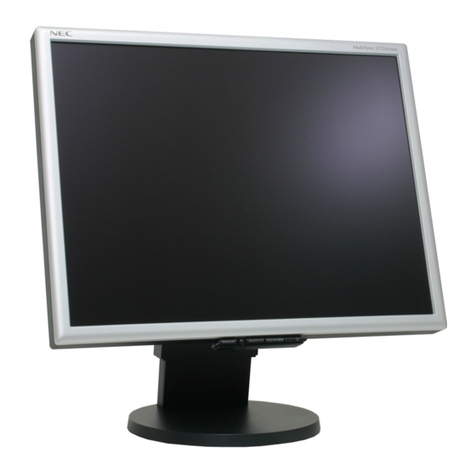
NEC
NEC LCD2070NX - MultiSync - 20" LCD Monitor user manual
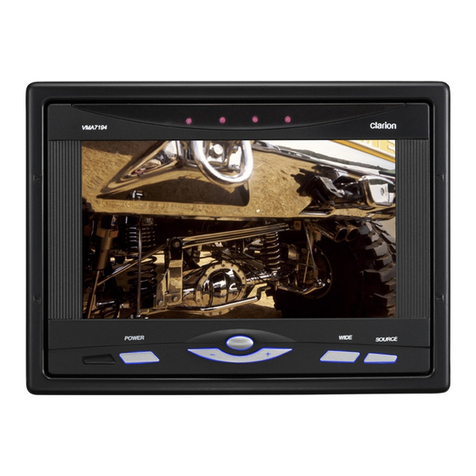
Clarion
Clarion VMA 5894 VMA5894 VMA5894 Owner's installation guide
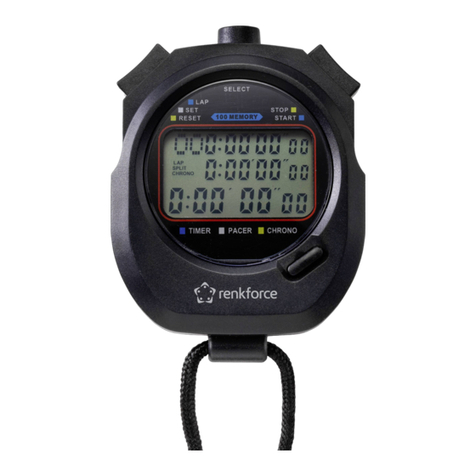
Renkforce
Renkforce RF-SW-130 operating instructions

beneq
beneq Lumineq EL320.240-FA3 Operation manual

Panasonic
Panasonic TH-47LFT30W brochure
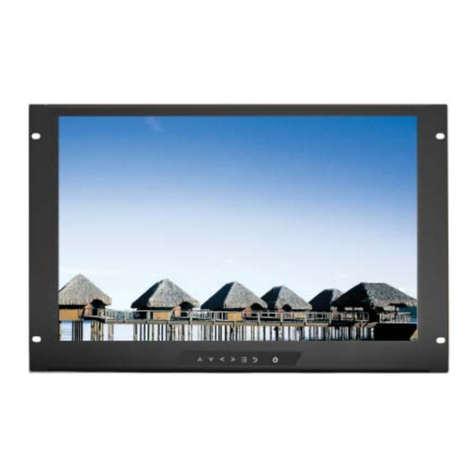
Austin Hughes
Austin Hughes Cyber View RP-W719 user manual
